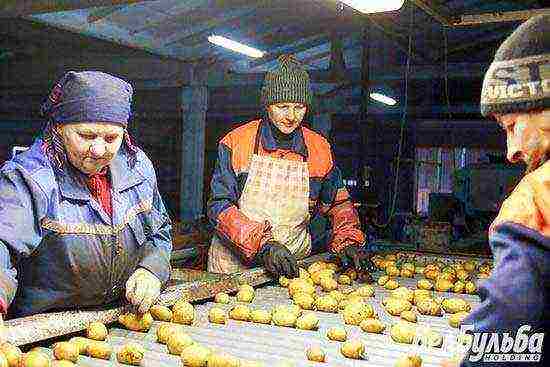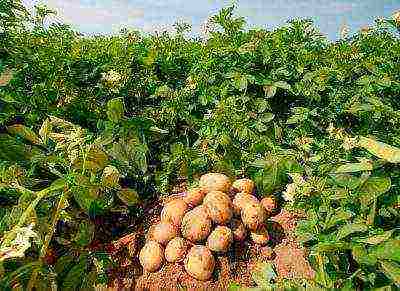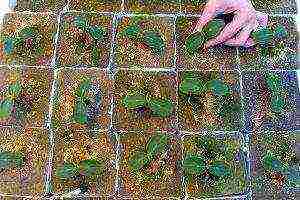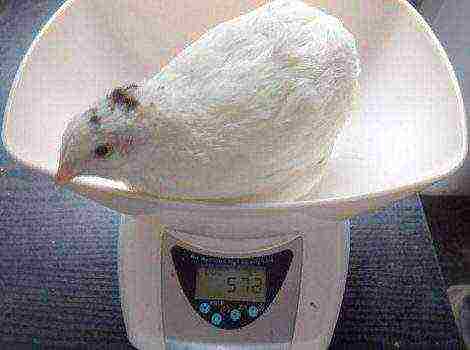Content
Growing potatoes on an industrial scale is a profitable and cost-effective business idea that will bring tangible profits to the entrepreneur, provided a competent approach and a clear cost calculation. In order for potato cultivation to be profitable, it is necessary to draw up an algorithm of actions for starting a business, draw up documentation, find sales markets and grow a crop.
Growing potatoes as a business
Business relevance
Growing potatoes is always a relevant business, since this root crop is a frequent guest on every table. Even if the family has a private land plot, not everyone can meet their needs in the amount of potatoes and, accordingly, purchase it.
Growing potatoes is always beneficial
For an entrepreneur, the pros of a business are:
- in the ease of growing root crops;
- in the absence of dependence of the demand for the product being sold on the season;
- in low costs for seeds and fertilizers;
- in a quick payback - with a competent approach, the business will be profitable from the first season.
The disadvantages and difficulties of entrepreneurship include:
- low price when selling a product;
- seasonality - it is impossible to grow potatoes all year round in the Russian climate;
- the need for regular treatment of plants from pests and installation of irrigation systems in the fields in case of drought.
Potato consumption potential in Russia
Sale of goods
Before starting to set up a business, an entrepreneur should explore the possibilities of marketing the products he grows. The profit earned by him largely depends on how profitable a businessman will be to sell potatoes.
Sale of goods
You can sell potatoes in the following ways:
- to sell root crops on the market on their own - this method requires a lot of time (which is often not enough for farmers) or additional expenses if a decision is made to hire a seller;
- selling crops to those who already trade in the markets at retail is convenient and often profitable;
- sell potatoes to wholesale resellers. This method is convenient in that there is no need to equip a special storage for potatoes for the winter-spring period;
- directly supplying goods to retail outlets. This option is the most profitable, but it is quite difficult to find regular customers.
Having decided on the distribution channels and making sure of their reliability, you can proceed to the main thing - the design and organization of your own potato growing business.
Growing and selling potatoes
Business organization algorithm
For growing root crops to be profitable, you need to think through every step. Initially, you need to draw up documents:
- if an entrepreneur plans to do business on his own small plot and the activity falls under the definition of an auxiliary personal farm, then it is not necessary to go through the registration procedure with government agencies, but it will be possible to sell the goods only independently;
- if the business is planned to expand to an industrial scale, then you should register with the Tax Inspectorate as an individual entrepreneur, choosing OKVED A. 01.13.21 and the system of taxation of the Unified Agricultural Taxation.
When organizing a large business, it is worth considering that wholesale buyers and retail chains are more willing to cooperate with individual entrepreneurs than with individuals, therefore, officially registered entrepreneurs have more options for selling grown products.
Potato
It also follows:
- rent or buy a land plot;
- prepare the land for planting root crops;
- rent equipment;
- organize an irrigation system;
- purchase planting material (in the first year, in the future it will remain from the previous harvest);
- organize a storage space for products.
Growing potatoes in large quantities requires fields and machinery
Necessary equipment
How to grow potatoes for sale?
How to grow potatoes for sale
For the first season, a field of 3-5 hectares will be enough for growing potatoes, subsequently the area can be increased. But, just renting or buying land is not enough - you need to prepare it for planting root crops:
- fertilize the soil until the onset of frost, until mid-autumn;
- the earth is loosened, cleaned of growing weeds;
- make fertilizers - preferably organic;
- potatoes are planted in spring - the planting time directly depends on the region: in the southern regions, planting begins at the end of March, and in the middle lane - in May.
Preparing potatoes for planting
Choosing potatoes for growing
Before the first planting season, you need to purchase material - you should choose tubers that do not have traces of damage, parasites and rotting. From the second year, you will not have to spend money on potatoes for planting - the material will be selected from the harvest obtained last season.
Preparing potatoes for planting
Preparing potatoes for planting should begin in advance, in the fall. Potatoes are "greened" like this:
- tubers are placed in a lighted place for 20 days - this action is necessary to protect the potatoes from rotting and improve their germination in the spring;
- then the roots are transferred to an unlit room and stored at a positive temperature in the range of 1-3 degrees.
Vernalization of potatoes
Before planting, for a month, the potatoes are moved to the light so that they germinate. At the time of planting, the sprouts should reach a minimum length of one centimeter. If large tubers are planted, then a number of manipulations must be carried out before germination:
- each potato is cut into several parts, while on any of them there should be 2-4 "eyes";
Cutting tubers before planting
It is preferable to cut the tubers across
How many parts to cut depends on the size of the tuber
- the place of the cut is sprinkled with ash - this is to prevent infection of the root crop;
- store potatoes in a bright room for a month, until the sprouts germinate.
Boarding time
Before planting potatoes in the ground, you should make sure that they are warm enough - their temperature should be about 9 degrees at a depth of 12-15 centimeters. The exact time of landing is determined by the climatic conditions in each specific region and the weather.
Choose your pick up time
Landing dates
Before the potatoes fall into the ground, the soil must be properly dug up, cleared of sprouted weeds. To maximize the comfort of growing a crop and, as a result, convenience when processing plants with agro-industrial equipment, it is necessary to observe certain distances between:
- between rows - from 30 to 40 centimeters;
- between the bushes - about a meter.
Root crop care, collection and storage
After 1.5-2 weeks after sowing, it is necessary to spud the planting - this procedure will give the earth softness and airiness, saturate it with oxygen, and in one - weeds are removed.
The main care of plants during growth and maturation is:
- in regular processing from the Colorado beetles of the aboveground part of the crop (tops) - insects are especially rampant during the flowering of potatoes and, if not timely processed, can destroy the entire crop;
- in watering - in normal weather it is enough to water the plants every 4 days, and in a drought the potatoes need moisture every day.
Potato field
Fertilize the land with manure (horse or cow), preferably before sowing. And so that the land does not lose its fertility, after harvesting root crops, it is sown with sunflowers, clover or corn.
The grown crop is harvested immediately after ripening - these are:
- favorably affects its taste;
- allows you to save all useful substances in root crops;
- prolongs the shelf life of potatoes.
Mass harvesting of potatoes begins in the 20th of August
Store potatoes in ventilated, moderately cool, dark rooms. Before placing vegetables in storage, they need to be dried and sorted - tubers with traces of rot and spoilage are not stored along with a healthy crop.
Potato storage
Potato business profitability
Potato packaging
If there is a plot of land of 30 acres, suitable for growing potatoes, the main items of expenditure will be:
- purchase of a motor-cultivator and attachments - about 48-55,000 rubles;
- purchase of a body for a tractor - from 20,000 rubles;
- purchase of seed - 15,000 rubles;
- maintenance of equipment, purchase of fertilizers - up to 10,000 rubles;
- paperwork and tax deductions - about 10-12,000.
In total, starting a business will cost an entrepreneur 112,000 rubles. With an average yield of 240 kilograms from one hundred square meters, after the harvest ripens, the entrepreneur will have 7,200 kilograms of products. With a wholesale price of 23 rubles per kilo of potatoes, the profit for the season will amount to 54,000 rubles.
The above calculation is approximate, allowing you to assess the profitability and compliance of material and physical investments in making a profit from the business of growing and selling potatoes. If you organize larger-scale sowing operations, using large areas, then the profit, respectively, will be higher.
Growing and selling potatoes is a fairly profitable and profitable business, the only drawback of which is seasonality. If you decide to engage in this activity, then carefully study the algorithm for starting and running a business so that entrepreneurship is profitable and does not cause problems.
In the photo potatoes
Video - Growing potatoes. Successful business
Vegetable garden Vladimir Ravilov
|
2016-01-12  Growing potatoes on an industrial scale
Growing potatoes on an industrial scale
Proper maintenance of potato plantings is very important, especially if potatoes are cultivated on an industrial scale. Potatoes are a member of the nightshade family, therefore they have a very large number of diseases and pests. In addition, potatoes are a row crop that must be cultivated with a row spacing of 70-90 cm and a distance between plants of 15-20 cm.
To obtain high yields of potatoes, proper care is necessary, which means that it is necessary to observe agrotechnical measures developed specifically for this crop: inter-row cultivation, protective measures against pests, weeds and diseases (spraying of plantings), pre-harvest desiccation and harvesting of tops.
The purpose of potato care ― creation of a favorable water and air regime for plants, as well as the destruction of weeds and pests, prevention of diseases and, as a consequence, the formation of a high-quality crop.
Loosening row spacings
From planting to germination, depending on the soil and weather, it takes from 15 to 30 days. During this period of time, the soil is compacted and weeds, which are less demanding on soil conditions, germinate and can drown out potato planting, which can reduce the yield by up to 40%.
To loosen the soil, it is necessary to loosen the row spacings and form ridges. For these activities, the following units are used: KOH-4.2, KOH-2.8, KPH-4.2 with harrows and cultivators AK-2.8, KGO-4, PAN-2.8 and others with harrows or with rotary working bodies.
The depth of soil cultivation is about 6-8 cm. This measure can be carried out with milling tools, which will allow the soil layer to be mixed more evenly and to form a volumetric ridge.
The second treatment is carried out after 5-8 days. The main tasks of the second treatment are weeds destruction, soil decompaction, creation of a good water and air regime in the ridge.The speed of the tractor during these treatments should be about 8-10 km / h.
 The potatoes we grow
The potatoes we grow
A well-formed ridge also contributes to a greater drought and heat resistance of the plant, and the potato becomes more resistant to diseases such as rhizoctonia and phytotorosis.
It is important that the working width of the cultivator's working bodies corresponds to the working width of the planting unit and during inter-row cultivation the movement follows the planting trail. If the plantings are heavily weedy, the number of inter-row treatments can be reduced by applying herbicides. Inter-row treatments can be replaced by chemical protection measures.
Diseases and pests of potatoes. Control measures
Potatoes damage a large number of pests and diseases: late blight, rhizoctonia, black leg, many types of scab and viruses. These damages can lead to a yield loss of up to 20% or a decrease in its quality. Even in seed farms, due to diseases, three out of ten tubers do not germinate, which leads to thinning of crops.
Agrotechnical and chemical protection measures are carried out to protect against all diseases and pests. Namely, two to three weeks before planting, tuber analysis, spring bulkhead of seed material, warming up, greening of planting potatoes, dressing of tubers with drugs such as Prestige, Maxim or their tank mixtures are carried out.
It is possible to introduce all mineral and organic forms of fertilizers only on the basis of an analysis of the content of nutrients in the soil, the removal of elements with the harvest and taking into account the planned yield.
The introduction of specialized potato crop rotations, that is, the return of potatoes to the previous field in 4 years and the use of cereals or legumes as a predecessor. Carrying out phyto-cleanings, that is, removing potatoes in plantings during flowering of plants of other varieties, which ensures the purity of the variety.
Protective measures against the Colorado potato beetle are carried out when the economic threshold of harmfulness of this insect is exceeded by spraying with insecticides. Insecticidal treatment can be combined with the introduction of growth stimulants and fertilizing with micronutrients.
Growth stimulants include such drugs as "Agat 25K", "Gidrogumat", "Oksigumat", "Oksidat Peat". When creating a tank mix, you must first check the drugs for compatibility. Preference is given to biological preparations - "Bitoxibatsilin", "Batsiturin", "Fitoverm" or chemical preparations of contact action - "Aktellik", "Karate Zeon", "Tanrek", "Biscay" and "Break".
 Sorting potatoes
Sorting potatoes
The main vectors of viral diseases are pests such as aphids and whiteflies. Against this type of insects, the plantings are chemically sprayed with preparations of the systemic or contact-systemic type - these are preparations of the "Bi-58 New" type.
When the economic threshold of harmfulness is exceeded, against late blight and Alternaria, the first preventive treatment is carried out before the closure of the tops, that is, when the potato reaches a height of 15-20 cm. The second treatment is carried out after 8-10 days. The timing of these treatments depends on the prevalence of diseases and agro-climatic conditions. The flow rate of the working fluid is about 200-300 l / ha. The number of these treatments can range from three to five per growing season.
This treatment is carried out with the following fungicides: "Azophos", "Acrobat", "Metaxil", "Ordan". Against the potato nematode, the most effective is the use of crop rotation and nematode-resistant varieties, for example, as Manifest, Santa, Krone, Juvel and others. When spraying, the speed of the unit should be 15 km / h, the wind speed should not exceed 3.5 m / s. The field must be leveled, no errors are allowed during this operation.
Weed control measures
Another reason for the lack of harvest is a high degree of weed infestation in plantings, it can reach up to 200 weeds per square meter. With a given degree of weediness, yield losses will be about 40%.
Weed control activities begin in the fall, after harvesting the predecessor. Peeling of the soil is carried out in order to provoke weeds for germination, then after 7-10 days the field is sprayed with glyphosate-containing preparations, such as "Tornado", "Roundup Extra", "Hurricane". Then, after two to three weeks, plowing is carried out. In the spring, as weeds germinate and the soil becomes physically ripe, cultivation is carried out, which can be repeated if necessary.
Prior to emergence, soil herbicides can be applied to create a protective shield against weeds. The drugs for this treatment will be "Zenkor", "Racer", "Stomp" and others. However, it should be borne in mind that after the application of soil herbicides, inter-row treatments or any other manipulations with the soil should not be carried out.
Inter-row treatments and spraying with soil herbicide do not solve the problem with weeds such as wormwood, sow thistle, dandelion. To combat them, pre-emergence of glyphosate-containing herbicides is possible, and the second wave after germination can be eliminated after germination herbicides of selective action - these are Agritox, Lazurit, Zenkor Ultra, Zontran.
After processing with these preparations and against the background of other agrotechnical and chemical measures on the potatoes, even if there was a strong weediness, the purity of the potatoes is ensured before harvesting.
Before harvest
Two weeks before harvesting, it is necessary to desiccate and mow the tops. Desiccation is carried out with glyphosate-containing preparations such as "Stomp" or "Basta". Desiccation allows faster assimilation of all nutrients from the tops to the tubers.
After the vegetative mass dries up, it is mowed. This event contributes to the ripening and strengthening of potato tubers, as a result of which keeping quality and preservation increase, the starch content and other varietal qualities of potatoes increase.
After mowing, it is necessary to additionally carry out inter-row cultivation in order to loosen the soil and give the potatoes air, which will also have a positive effect on the quality of the crop.
If you follow all the recommendations for caring for potato plantings, regardless of the type of soil granulometric composition and climatic conditions, you can get a high-quality potato crop.
 Proper care of potatoes is the key to a good harvest
Proper care of potatoes is the key to a good harvest
The material was provided by the agricultural company "BelBulba" Phone in Belarus: +375 29 665 31 06
Growing potatoes
Potatoes, a vegetable so traditional for Belarus, require a lot of attention. If you decide to grow potatoes on an industrial scale, then special attention should be paid to the selection and preparation of the soil. In addition, it is necessary to decide on the technology of planting and harvesting. Protection from pests and diseases also requires a lot of effort.
Potato varieties. Allocate early, mid-early, mid-season, late late and late varieties of potatoes. Regardless of the ripening period, each of the varieties has its own characteristics, taste, the degree of resistance to diseases, etc.
Pre-planting soil preparation. For good growth of potatoes, a soil of a homogeneous, fine crumbly structure is required. The soil should retain moisture well in the root layer during dry periods, but not be too heavy. Read completely
Fertilization. Mandatory requirements when applying any types of organic fertilizers are uniformity of their distribution over the surface of the field and quick incorporation into the soil within 3-5 hours after spreading. Read the article
Seed preparation. The preparation of planting material includes sorting and grading of tubers into fractions, air-thermal heating or germination, dressing and treatment of tubers with stimulating substances. The preparation of planting material should be started no later than 2-4 weeks before planting. Read completely
Planting potatoes. The planting density of potatoes depends directly on the cultivated variety. In addition, it directly affects the yield. The type of soil, age of seeds and other factors also influence. Read completely
Potato care. Basic potato care includes the following activities: weed control, hilling to form ridges and keeping the soil loose. Moreover, loosening of the soil should be carried out until harvesting. Read completely
Disease and Pest Control System. There are two methods of pest control. Firstly, it is carrying out preventive work. Secondly, exterminatory measures. This article describes methods of dealing with late blight, Colorado beetles and other potato pests. Read completely
Preparation for harvesting potatoes. To accelerate the ripening of tubers, to better dry the ridges and ridges, to prevent damage to tubers by late blight, to improve their quality, it is necessary to carry out pre-harvest removal of the tops or its desiccation. Read completely
Harvesting potatoes. Hardly anyone would argue that harvesting potatoes is the most difficult stage. It requires a high level of organization, both technically and administratively. Read completely
Post-harvest revision of the potato crop. Immediately after harvesting in each farm, it is necessary to determine the suitability of the harvested potatoes for long-term storage. To do this, it is enough to place 100 tubers from each batch in plastic bags, tie tightly and keep at a temperature of +20 ° C for two weeks. Read completely
Potato storage. There are three technologies for laying tubers for storage: in-line, transshipment and direct-flow. More about each of them

Potatoes are the most popular vegetable on the table of any Russian. In our country, the inhabitants call it the second bread. The demand for this root crop in our market greatly exceeds the supply. In this niche of agricultural production, there is always a place not only for large farms, but also for single farmers.
Growing potatoes is a process that affects the harvest. In order to get a high yield, it is necessary to adhere to the technology of growing potatoes. In this article, we have tried to provide the necessary information that will help you create favorable conditions for growing potatoes.
…


